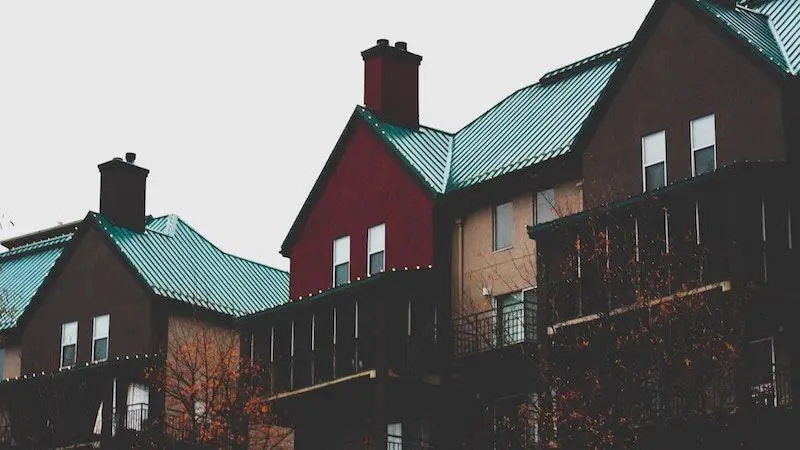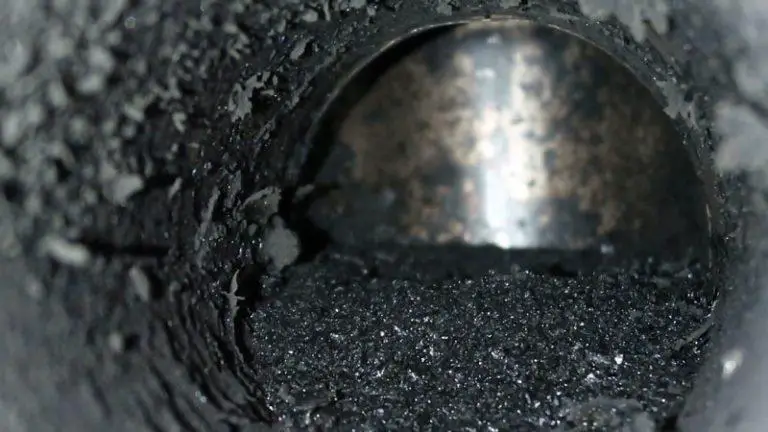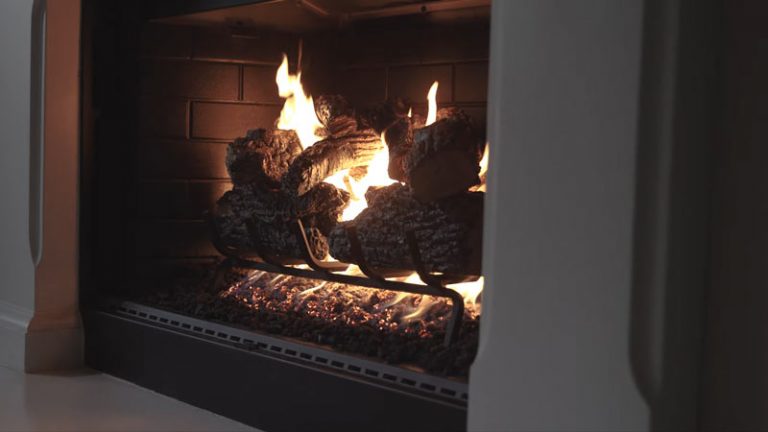Why Is Soot Coming Out Of Chimney

Poor fire burning can release creosote and soot, two byproducts of a poorly burning fire. Soot accumulates in the flue liner of a wood stove, while creosote is unique in that it is mostly tars produced due to the incomplete combustion of wood.
On the other hand, soot can result from the poor combustion of oil, gas, or wood. Properly managing your fireplace will ensure minimal production of these harmful emissions into your home environment. In summary, knowing which type of emission you are dealing with is essential if you want to keep your home healthy and free from harmful pollutants.
You'll Learn About
Why Is Soot Coming Out Of Chimney?
Poor fire burning and combustion from wood, oil, or gas can produce creosote and soot in your home’s flue liner. Soot accumulates in the flue liner of a wood stove over time, while poor combustion results in creosote production for oil and gas heaters.
Creosote is unique because it is mostly tar produced as a result of incomplete combustion of different types of fuels, including wood. Soot, on the other hand, often comes about when poor fuel combustion produces unhealthy levels of pollutants like carcinogens within the atmosphere.
It is important to be aware of these toxins so that you can make informed decisions about how to burn your heating sources.
Byproducts of Poor Fire Burning
If your home has a chimney, soot and creosote are byproducts of poor burning that can cause this problem. Soot is an unwanted byproduct from fire-based heating systems like wood or coal stoves or open fires in the fireplace.
Creosote is created when fuels like oil, gasoline, and kerosene are burned in an oxygen-deprived environment, such as inside a chimney. Soot and creosote accumulation on walls, ceilings, and other surfaces can lead to serious health problems if not cleaned regularly – especially for people with respiratory conditions like asthma or COPD.

Poorly maintained heating systems can also create environmental toxins, including carbon monoxide, which poses risks to both you and your family members.
Poor Combustion of Oil, Gas, or Wood
The combustion process of oil and gas can cause soot to come out of a chimney. Soot also comes from the poor combustion of wood, which creates harmful toxins in the air.
If you have questions about your chimney’s performance or if soot is coming out, call a professional for help. You can reduce the amount of soot that comes out by using proper fuel and ventilation techniques when burning these materials outdoors.
In some cases, cleaning up after fires outside may be necessary before they pose any health risks indoors.
Soot Accumulates in the Flue Liner
When you use a wood stove, the heat from the fire melts the snow and ice on your roof or in any nearby trees. This water vapor is drawn up through the flue liner, where it cools and condenses as soot, which then falls back down to earth.
You can reduce this soot accumulation by cleaning your chimney once per year with a stiff brush – before winter arrives – and sweeping out all of the built-up debris. Another way to reduce soot accumulation is to install an airtight thermal chimney cap that seals off combustion gases from entering your home below ground level.
Finally, if you live in an area with severe cold winters, consider installing a carbon monoxide (CO) detector near your wood stove.
Creosote Is Mostly Tars
Creosote is unique in that it is mostly tar produced due to the incomplete combustion of wood. This chemical can accumulate over time and cause a sooty residue to come out of your chimney.

There are several things you can do to help reduce the amount of creosote buildup, including using proper burning techniques and installing a chimney sweep annually. If all else fails, hiring a professional will be the best solution for clearing this buildup from your chimney once and for all. Keep an eye on the smoke exiting your home’s vents throughout the year; if there’s too much soot, call an expert.
How do I stop soot in my chimney?
If you see soot or smoke coming from your chimney, there may be a problem. Soot is the result of combustion, and if it’s not cleared properly, it can build up and form smog.
Here are some tips to help stop soot in your chimney:
- Clean the flue regularly using a brush and wire mesh – this will remove any buildup.
- Check for cracks in the brickwork around the fireplace.
Check Your Chimney And Fireplace For Buildup
Soot and other particulates can build up in your chimney over time, which will eventually cause problems with your fireplace and/or chimney. To check for soot buildup, you can use a smoke detector or fire inspector to measure the amount of smoke coming out of your chimney.
If there is significant buildup, it may be necessary to have the chimney cleaned.
Keep The Chimney Clean
To keep soot from building up in your fireplace, make sure that the inside of the chimney is kept clean and free from debris. This includes using a brush to remove any excess ash or cinders from the top of the fireplace, as well as cleaning around any joints where wood meets metal pipework.
Use A Chimney Cap When Burning Wood
When burning wood indoors (in an open flame), always use a chimney cap to prevent soot and sparks from flying into surrounding areas. You can also install an automatic shutoff system on your stovetop if you want extra peace of mind when cooking with wood fires.
Avoid Smoking In An Open Flame
Smoking around an open flame, such as a stove, can be hazardous. To protect yourself from the dangers of open-flame smoking, try using a stovetop that has a built-in automatic shutoff system.
Protect Your Chimney
In addition to cleaning the inside of your chimney, you should also try to protect the outside. If you are having issues with a chimney that is near a wall or building, you may need to have it moved away from the structure.

Why is there black stuff coming out of my chimney?
If you see black stuff coming out of your chimney, it’s probably due to a problem with the flue. The flue is a tube that carries smoke and heat from the fireplace out into the air.
If it’s blocked or faulty, this will cause smoke to escape in various directions instead of up the chimney.
Chimney Not Clean
If your fireplace is not clean, the smoke from the fire will not be able to escape and will accumulate in the chimney.
This can cause black stuff to come out of your chimney. You can clean your fireplace and clear any obstructions using a professional cleaning company or by using some simple DIY methods.
Damaged Fireplace Components
If there are any damaged parts in your fireplace, this may also be contributing to the accumulation of black stuff coming out of your chimney.
If you notice any holes, cracks, or missing pieces, have them fixed as soon as possible so that smoke from the fire does not get trapped inside the structure.
Faulty Fireplace Equipment
If you notice that your fireplace equipment is malfunctioning, you can either replace it or repair it.
The following is a list of some common issues with fireplaces:
Spark Arrestor
Spark Arrestors can cause smoke and ash to accumulate in the chimney. They can also stop the flow of air through the chimney, which can cause your fireplace to overheat.
If you have a spark arrestor, you should check it and ensure it is working properly. If it is not, replace it.
Firebox
If your firebox is leaking, you can either repair it or replace it.
A firebox that is leaking can allow the chimney to fill up with soot, which can cause a fire to start. You can prevent this by repairing the leak or replacing the firebox.
Cockpit
A malfunctioning Cockpit can cause the fireplace to overheat, which can damage it. You should check the Cockpit and ensure that it is working properly.
If it is not working properly, replace it.
Vent
A malfunctioning Vent can also cause the fireplace to overheat.
Low Temperature
In cold climates where it’s common for fires to go out mid-day or overnight due to low temperatures, accumulated smoke can find its way up into attics and through vents leading outside – creating an unpleasant environment indoors known colloquially as “piping smoke.”
Obstructed Airflow
Obstructed airflow can cause smoke to escape through the chimney in unintended ways. Ensure your chimney is clear of debris and functioning properly.
Does burning a hot fire remove creosote?
If you have creosote buildup on the inside of your chimney, burning a hot fire will remove it. After removing the creosote buildup with a Chimney Cleaning Service, you may need to clean the flue liner.
Burning plastic bottles in an open flame won’t work as well as using aluminum cans – they create too much heat and don’t get rid of all the creosote like metal can do. The amount of creosote removed will vary depending on how dirty and damaged your chimney is.
If it’s in good condition, most of the creosote should be gone after burning a few cans or bottles in a fire pit or grill. You should always call a professional when cleaning up something like this – their equipment is specifically designed to get into tight spaces and clean them properly.
Do chimney sweeping logs work?
Sweeping logs to clean out the fireplace flue are not effective enough. Creosote sweeping logs aren’t effective either, and they can also harm your hands if you’re not careful.
Charcoal grills and smokers tend to be a more serious problem than fireplaces – Clean them at least once a year with a chimney sweeps log or professional cleaner. If you live in an area with high air pollution, use smoke detectors to warn you before smoking indoors – even if your fireplace is clean.
Keep your home Chimney Sweep Logs handy so that when needed, they can help keep your indoor environment safe from harmful pollutants.
How do you test a chimney for creosote?
To test if there is any creosote buildup on top of the fireplace damper, use a poker to scratch the smoke chamber above your damper. If there is any creosote, don’t use the fireplace until it’s clean.
A chimney sweep may be required to clear out any buildup before using the fireplace again. Make sure you have an accurate measure of how much wood is in your firebox before lighting it up.
Soot coming out of your chimney is often a sign of incomplete combustion or poor ventilation. This can be caused by burning wet wood, overloading the fireplace, or a blocked chimney. Regular cleaning and proper burning practices can help prevent soot buildup.
If you’re dealing with chimney issues, it’s worth learning about how creosote bushes make food, as they share similarities with soot-producing materials. Additionally, understanding how long a creosote buster takes to burn can help you manage chimney maintenance. For more tips, explore whether creosote buster logs really work.
To Recap
There are a few potential causes for soot coming out of your chimney, but the most likely one is that there’s an obstruction in the flue. To check for this, you’ll need to use an infrared camera or smoke detector to look for heat and smoke signals being sent from the fireplace area.
If these signs are present, then it may be time to have a professional inspect your chimney system. Otherwise, you can try cleaning out any debris or obstructions with a broom and a dustpan before calling a professional.






